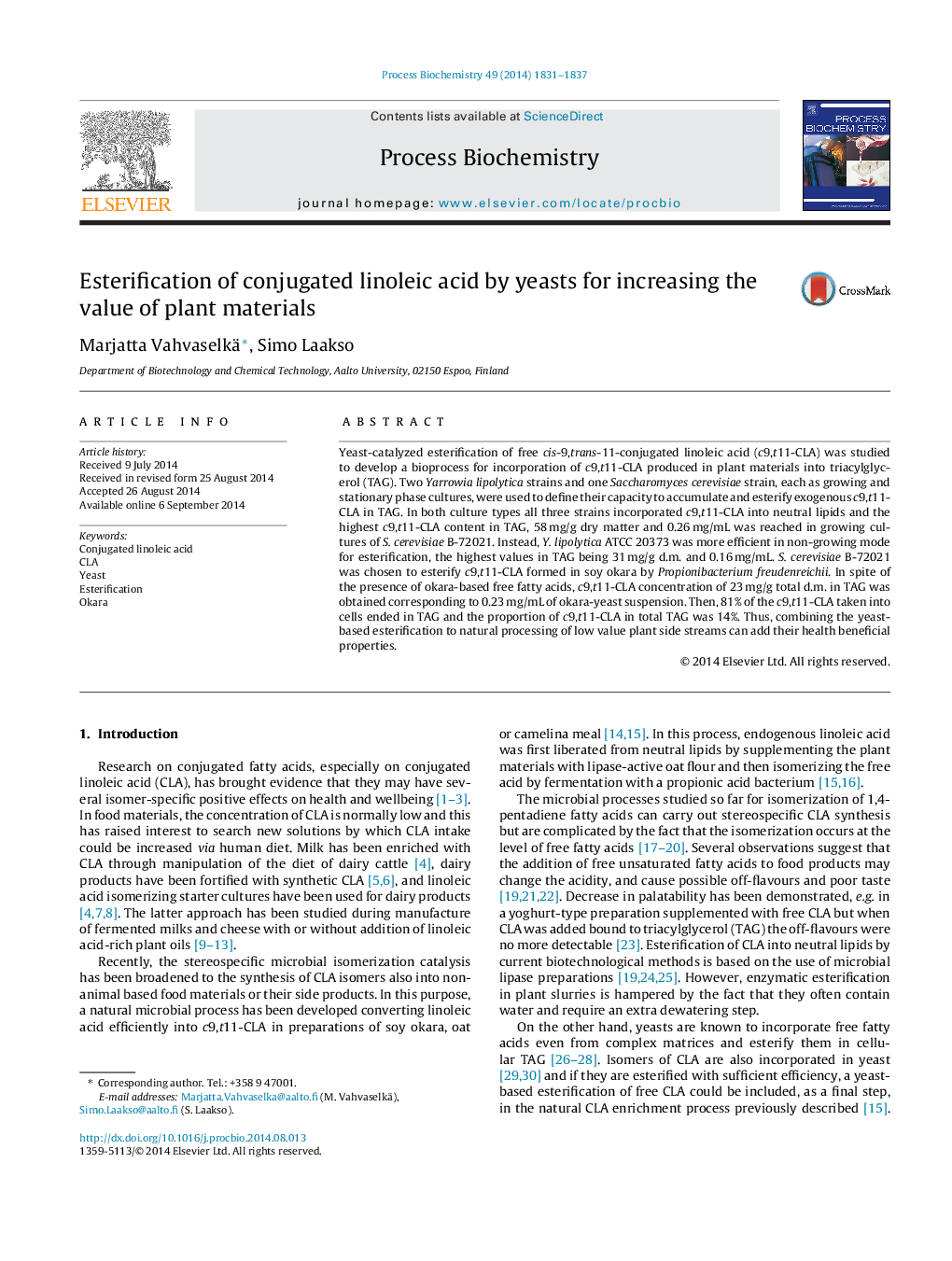| Article ID | Journal | Published Year | Pages | File Type |
|---|---|---|---|---|
| 34439 | Process Biochemistry | 2014 | 7 Pages |
•Enrichment of soy okara with esterified c9,t11-CLA by fermentative methods.•c9,t11-CLA was incorporated into TAG fatty acids by Saccharomyces cerevisiae and Yarrowia lipolytica.•Esterification process concept was applied first time to plant materials.
Yeast-catalyzed esterification of free cis-9,trans-11-conjugated linoleic acid (c9,t11-CLA) was studied to develop a bioprocess for incorporation of c9,t11-CLA produced in plant materials into triacylglycerol (TAG). Two Yarrowia lipolytica strains and one Saccharomyces cerevisiae strain, each as growing and stationary phase cultures, were used to define their capacity to accumulate and esterify exogenous c9,t11-CLA in TAG. In both culture types all three strains incorporated c9,t11-CLA into neutral lipids and the highest c9,t11-CLA content in TAG, 58 mg/g dry matter and 0.26 mg/mL was reached in growing cultures of S. cerevisiae B-72021. Instead, Y. lipolytica ATCC 20373 was more efficient in non-growing mode for esterification, the highest values in TAG being 31 mg/g d.m. and 0.16 mg/mL. S. cerevisiae B-72021 was chosen to esterify c9,t11-CLA formed in soy okara by Propionibacterium freudenreichii. In spite of the presence of okara-based free fatty acids, c9,t11-CLA concentration of 23 mg/g total d.m. in TAG was obtained corresponding to 0.23 mg/mL of okara-yeast suspension. Then, 81% of the c9,t11-CLA taken into cells ended in TAG and the proportion of c9,t11-CLA in total TAG was 14%. Thus, combining the yeast-based esterification to natural processing of low value plant side streams can add their health beneficial properties.
Graphical abstractFigure optionsDownload full-size imageDownload as PowerPoint slide
